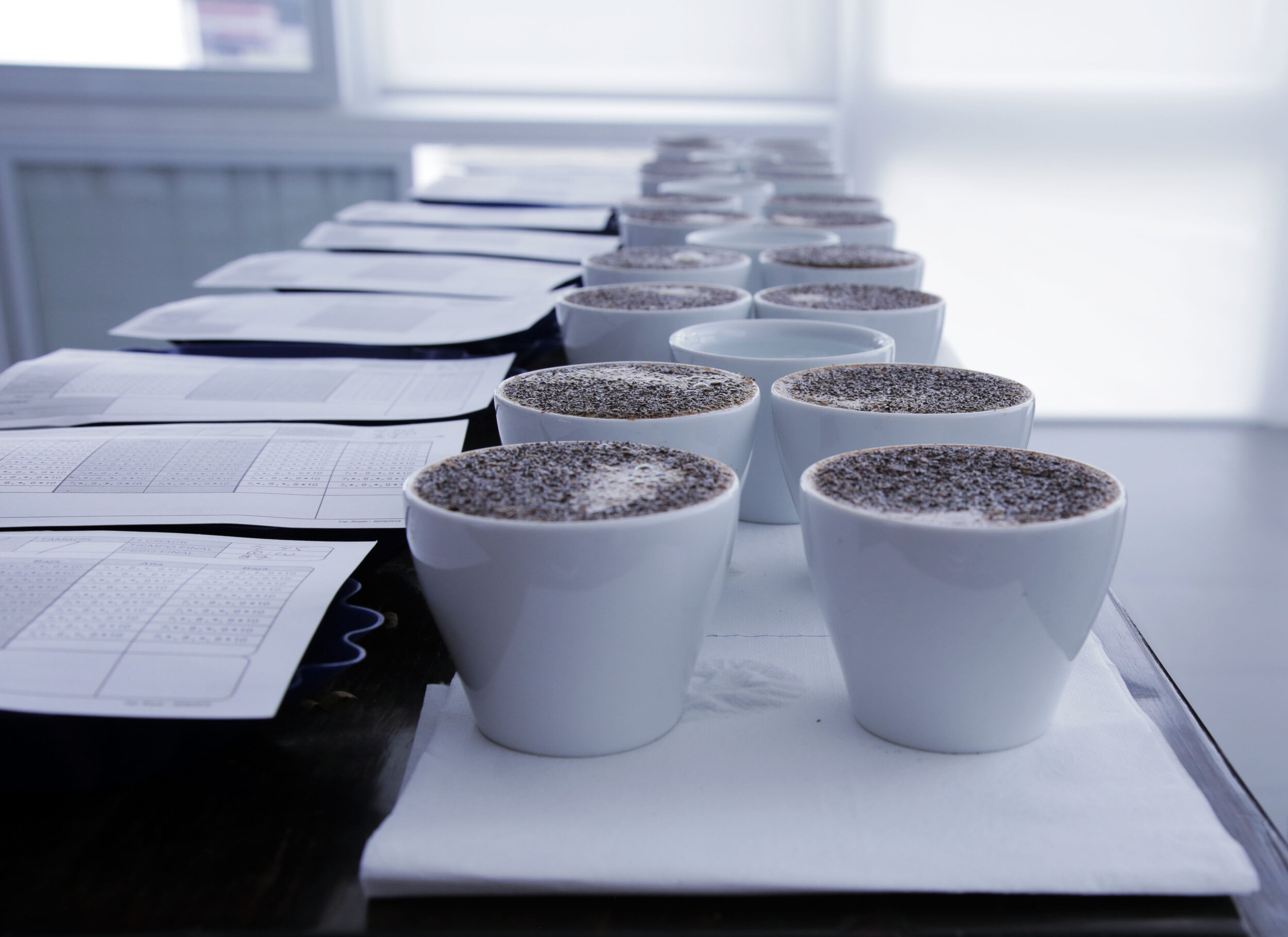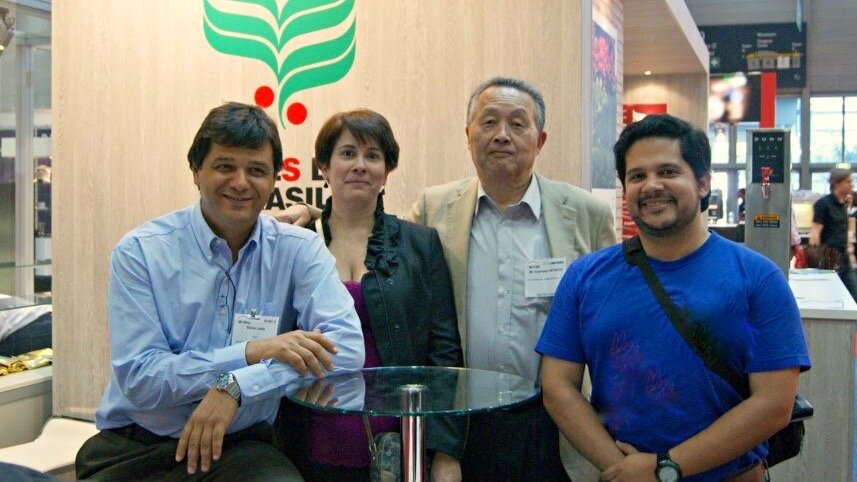The changing culture of taste.
How climate change is altering the way we appreciate coffee.
Cupping the Top 30 coffees from Guatemala for 2020.
My name is Josué Morales and I’ve been in the specialty coffee industry since 2003.
Wine is an industry that most other agricultural products with an added value aspire to become. Wine makers and marketers have done their work so well that even consumers who have a limited knowledge on the process of wine are aware that there are at least a few things that make one wine different from another.
Most consumers understand that there is a marked difference between origins, or what country the wine comes from. Most consumers know that wines can be told apart by the botanical varietal and that based on it there can be certain expectations of taste. Then there’s the vintage, or the year in which a wine was bottled. It even goes to the extent that a minimum notion of paring is common knowledge when serving red wine for red meats and white wines for seafood.
More refined connoisseurs of wine will go as deep as knowing specific regions, methods of production, and will even look for wines from specific Estates or families. They will go to great lengths and pay exuberant amounts of money for rare and old wines.
For the most part the average wine consumer is very forgiving. It's more about the feeling of exploration and discovery within a budget that guides decisions, and of course, there’s the buzz.
Coffee is following the footsteps of wine in many ways. Starbucks accelerated the learning curve in a very aggressive way. Consumers had the opportunity to be presented with a variety of origins such as in the wine industry. Countries such as Colombia, Brazil, Kenya and Guatemala became mainstream names for the consumer who had the ability to experience that each different producing origin possessed a different tastes and characteristics.
What started with this giant chain evolved over the next couple of decades into a highly specialized and competitive market place. As the hunger for opportunity in the coffee business sparked the entrepreneurial spirit all over the world, so did the hunger to compete with increasingly detailed, specific and unique coffees.
The learning curve for the coffee industry and for the consumer went quickly from merely identifying different degrees of roast and what they contribute to taste, into knowing the names of specific regions within producing countries.
Thousands of roasting companies emerged all over the world and through their purchasing teams they traveled all of the producing origins in order to find the coffees from the highest quality that would fit their business models. As much as they built their brands they also built a stage for the recognition of the producer, and the names of specific farms and cooperatives started to have a following of their own.
I was already working in coffee during the specialty roaster boom. During the first decade of my career there weren’t very many coffee buyers visiting origin, not compared to the way it is now. Those who were traveling back then had an advantage over the generation of buyers that came after in the sense that those producers making a better than average coffee would easily stand out.
In 1999 a program called Cup of Excellence started which consisted of organizing a competition that would be judged by a jury composed of many of the buyers from the emerging coffee roasting companies from all over the world. Winning lots would then go to an auction where roasters would bid on these extraordinary coffees for extraordinary prices.
Josué Morales with some of the key people involved in the creation of Cup of Excellence. Silvio Leite and Vanusia Nogueira from the Brasilian Specialty Coffee Association, and Mr. Hidetaka Hayashi of Hayashi Coffee Company in Japan. Vienna, July 2012.
The auction came to Guatemala in 2001 for the first time with outstanding results. The auction’s 17th edition will be held in a couple of weeks.
One thing the auction does well is allowing a stage for otherwise unknown producers to make their way into the awareness of international buyers that bring with them opportunities for relationships and better prices.
The auction has become a barometer for the standards of quality in the country. It’s also been an interesting evolution in terms of the trends for processing and varietals being produced. A lot of what we see now is an answer to that exposure of a globalized market that emerged as a consequence of the program.
As these dynamics pushed for the creation of a new niche in what had been a stagnant industry for a long time, in the real world, the realm of the auction became mostly reserved for very wealthy producers that could afford the cost of experimenting. The small producer and the farms working for subsistence were facing a much more somber reality.
There were severe changes that happened in the coffee being produced in Guatemala between 2012 and 2017.
Starting with the Leaf Rust crisis, which is a fungal disease that makes a host out of coffee leaves, restricting its ability to perform photosynthesis, and therefore affecting the production of the plant –and even its survival.
This crisis came to weaken a sector that was already struggling with pricing and a changing environment. It weakened not only the incentives to continue producing coffee, but it also weakened the coffee plants themselves.
Perhaps the most notorious effect of a crisis started in 2013 with what I defined as The Premature Aging of Coffee.
Our beautiful, high-scoring, high-grown coffees started fading drastically and tasting stale, old, and tired—after only a matter of months. We couldn’t understand what was going on or why. If only the most perfect cherries were picked at the height of ripeness and processed with all the care and time in the world, what went wrong?
Coffee presented a very short life cycle, between six and eight months before undergoing drastic changes: the bean’s appearance became pale and white, and presenting flavors which are not associated with old coffee, but rather with a cardboard and papery taste. Acidity and complexity faded almost completely.
Also, coffee presented a significant loss in density and moisture readings, but also in the way the beans were roasted (requiring significant temperature adjustments).
During those years of crisis there was a significant shift in rainfall patterns in producing areas. Rainfall on the macro level remained constant in quantity, yet not in its expected timing. First rains usually come in May, and the rainy season settles between the end of July and the beginning of October.
Yet, out-of-season rains started determining the flowering patterns of coffee. With initial rains falling in January and February, an out-of-season flowering occurred. Once the coffee tree flowers, as a rule, will result in coffee harvest eight to nine months later.
An additional shower at the end of April and mid-May will trigger a new flowering—no longer the historical main flowering, but a diminished version of the same. The traditional formal flowering of spring that would often result in the famous best coffees of the “third picking” were no longer a reality.
With the rain patterns changing, it meant there were also longer periods of time without it. These droughts happened during the period in which fertilizers are applied and critical nutrition is absorbed by the coffee trees.
We are counting on rainfall to activate the components on these fertilizers to reach the plant, yet these remain on the hot ground, often lost due to evaporation. The opportunity to feed the plant and give density to the coffee is lost during the entire critical part of the growth cycle.
Rain that triggers coffee’s final nutrition started falling out of season as well, during October and November. These are months in which we don’t historically experience rain.
When the rains finally came, what was found on the ground was often the fertilizer that didn’t evaporate with the sun, formulas that contain higher doses of elements needed at the final stage of cherry maturation. The result is an accelerated final ripening of the cherry without going through proper development of sugars.
The cumulative result of these factors is an out-of-season harvest in which the peak of production is experienced in December rather than in March. The plant is still bearing at that point the production triggered by the April and May flowerings that won’t ripen until February or March when the plant is already exhausted, and often bearing new fruit because another cycle of out-of-season rains.
The final picking—if not sacrificed and picked green to prevent additional stress on the plant—often lacks all necessary elements of nutrition.
During the last few days I tasted the Top 30 lots from Cup of Excellence for Guatemala. All the coffees were exceptional and worthy of the auction and I could tell there has been a lot of dedication and love involved in their production.
As the barometer for interpretation on what we are currently valuing as the standard of quality what the lineup for this year’s auction tells me is that things have changed. Drastically.
The way we came out of the crisis reflects a very safe series of decisions. There has been a change in the way coffee is processed, so that the process is what presents the quality and not the inherent quality of the product.
There has been a change in the type of coffee trees we’re growing. Making bets on specific varietals that present an exotic profile paired with the processing styles adopted, and at the same time making bets on varietals that are less susceptible to the climatic and fungal variations.
There has been a seemingly standardized way tweaking the way these coffees need to be crafted to fit a certain expectation of taste, which is obtained with specific recipes for the way it's roasted and brewed as well. This has led to the way training for coffee tasting has been adapted to favor, above all, the most obvious aspects of taste, to the point of making the coffee that is currently trending similar even when coming from different countries and regions.
My main takeaways from the 2020 lineup for the auction is having experienced a very exciting and complex series of coffees; and realizing that, the ability coffee has of being a reflection of the place it comes from and the people who produce it, is starting to be neglected.
My fear is that the next step will be further standardization in the name of market opportunities and higher prices. Diversity in profiles of taste will have a tendency to become homogeneous regardless of where coffee is grown.

